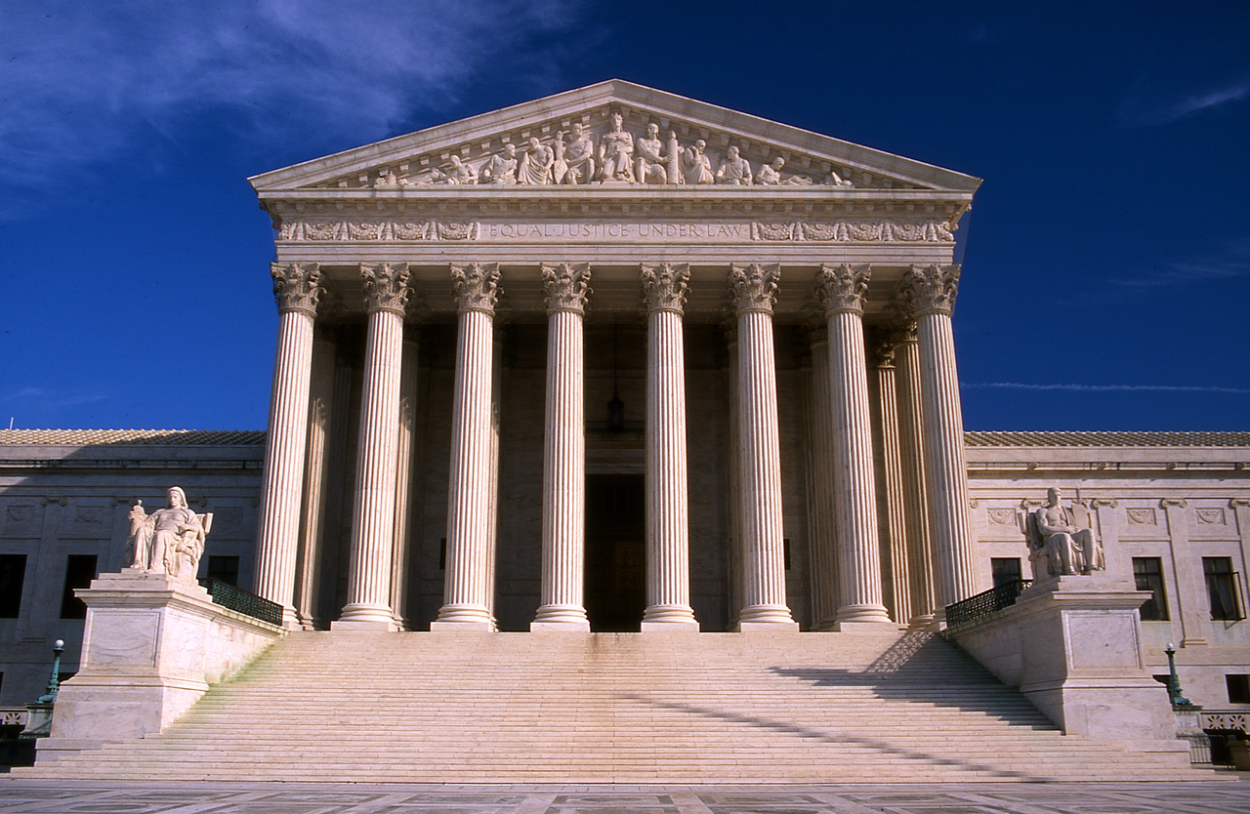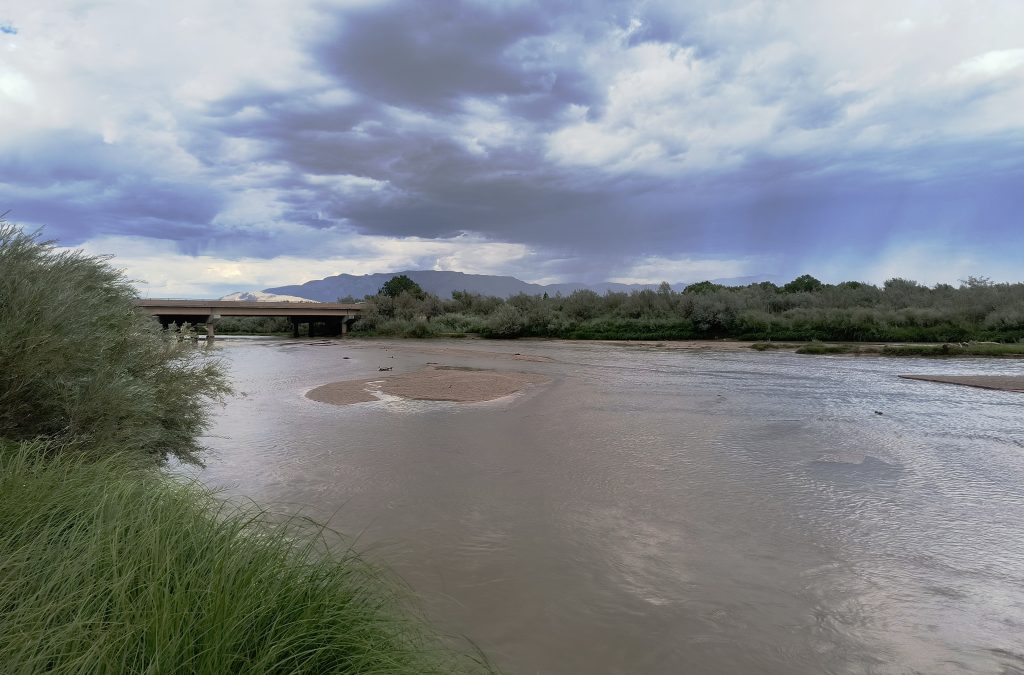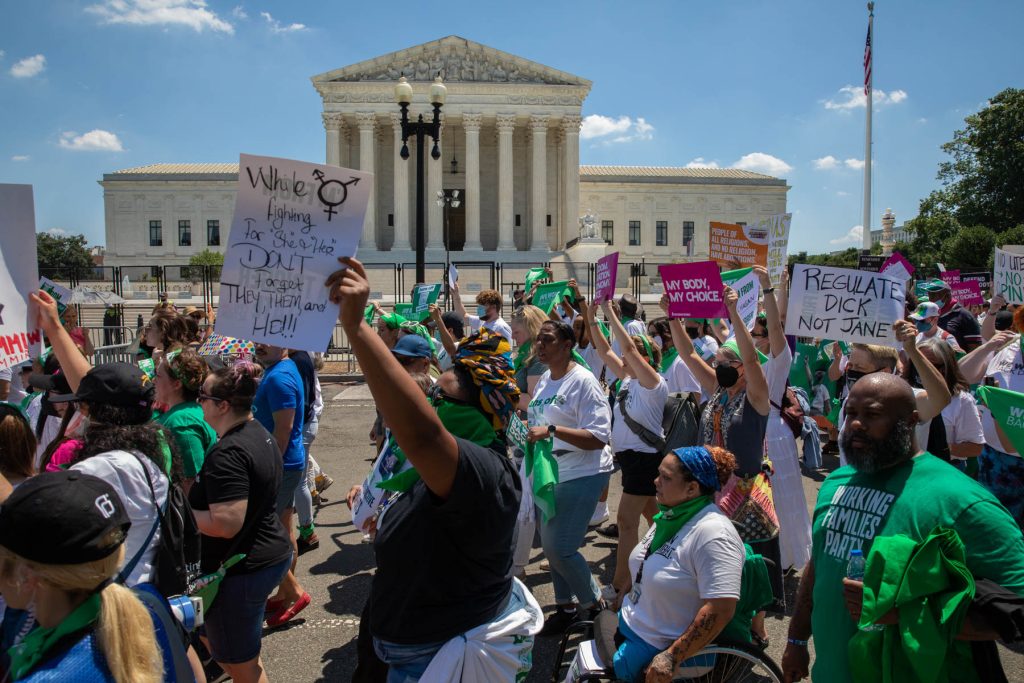Environmental advocacy groups say that a U.S. Supreme Court ruling weakening the Clean Water Act will put waters throughout the country at risk of pollution and degradation.
The ruling requires a more stringent test to determine if wetlands are protected under the decades-old law.
The case, Sackett vs. U.S. EPA, stems from a couple—Mike and Chantell Sackett—who bought land in Idaho to build a house. The Sacketts had begun backfilling the lot with dirt to prepare to build the house when the U.S. Environmental Protection Agency informed them that backfilling violated the Clean Water Act. The couple were ordered to restore the site.
The Supreme Court on Thursday ruled that this action violated the couple’s private property rights, but more significantly, the majority opinion struck down the significant nexus test that has been used to determine if wetlands are protected under the Clean Water Act.
The Clean Water Act prohibits the discharge of pollutants, including rocks and sand, into navigable waters, which are referred to as waters of the United States. Because a nearby ditch could transport wetland water from the Sackett’s property into Priest Lake via a non-navigable creek, the EPA determined that the Sackett’s actions were in violation of the law.
The U.S. Court of Appeals for the 9th Circuit used what is known as the significant nexus test to determine that the wetlands could significantly impact the quality of the water in a navigable waterway and, therefore, the wetlands were protected.
But the Supreme Court decision reversed the lower court’s ruling and the majority of the justices argued that a more stringent test should be applied. The more stringent test requires wetlands to have a continuous surface connection to a protected body of water to the point that it is virtually indistinguishable where the wetland ends and the other body of water begins.
Kavanaugh breaks with conservative colleagues
Instead of the significant nexus test, the court created a new test known as the continuous surface connection test to determine if a wetland is protected under the Clean Water Act. That means wetlands that are separated from a river or a lake by a man-made structure, a naturally-occurring berm or a beach dune are no longer protected under the Clean Water Act.
But, while all nine justices agreed that the Sackett’s wetland was not protected by the Clean Water Act, not all of them agreed that wetlands need a continuous surface connection to receive protection under the Clean Water Act.
Justice Brett Kavanaugh authored a dissent disagreeing with the continuous surface connection test. Justice Sonia Sotomayor, Justice Elena Kagan and Justice Ketanji Brown Jackson joined Kavanaugh’s dissent.
“By narrowing the Act’s coverage of wetlands to only adjoining wetlands, the Court’s new test will leave some long-regulated adjacent wetlands no longer covered by the Clean Water Act, with significant repercussions for water quality and flood control throughout the United States,” Kavanaugh wrote.
He pointed to the extensive levee system along the Mississippi River as an example of a place where wetlands that play an important role in flood control could lose protection.
“Likewise, federal protection of the Chesapeake Bay might be less effective if fill can be dumped into wetlands that are adjacent to (but not adjoining) the bay and its covered tributaries,” Kavanaugh wrote. “Those are just two of many examples of how the Court’s overly narrow view of the Clean Water Act will have concrete impact.”
He further noted that water can move between an adjacent wetland and a river, lake or other body of water even if the wetland does not have a surface connection.
“The scientific evidence overwhelmingly demonstrates that wetlands separated from covered waters by those kinds of berms or barriers, for example, still play an important role in protecting neighboring and downstream waters, including by filtering pollutants, storing water, and providing flood control,” Kavanaugh wrote.
Environmental advocacy groups decry decision
“The Supreme Court ripped the heart out of the law we depend on to protect American waters and wetlands,” Manish Bapna, president and CEO of the Natural Resources Defense Council, said in a press release. “The majority chose to protect polluters at the expense of healthy wetlands and waterways. This decision will cause incalculable harm. Communities across the country will pay the price.”
Bapna said it is now important for states to strengthen their own laws protecting waters and for the government to enforce the remaining provisions in the Clean Water Act.
She was not alone in that sentiment. Tannis Fox, a senior attorney for the Western Environmental Law Center, said in a statement that New Mexico’s congressional delegation should “lead the charge in Congress to restore Clean Water Act protections.” She said the state should also “move swiftly to establish its own surface water permitting program to protect our state’s streams and wetlands.”
“In New Mexico, streams, lakes, and wetlands sustain our state’s culture, traditions, communities, wildlife and ecosystems, and economy, and must be protected,” Fox said.
Sierra Club Executive Director Ben Jealous said in a statement that the court’s ruling is “profoundly wrong and directly at odds with the statute Congress enacted 50 years ago—a statute the public supported then, and continues to support today.”
“Access to clean, safe, reliable water is a fundamental human right, and it is deeply disappointing that the Court has sided with polluters and the industry to roll back the clock on clean water protections,” Jealous said. “As a result of this decision, millions of Americans will have less safe drinking water than the generation before them.”
Biden says ruling will ‘take our country backwards’
In a statement, President Joe Biden said the decision will “take our country backwards.” He said the ruling puts the country’s wetlands, as well as its rivers, streams, lakes and ponds that are connected to them, at risk.
“Since the Clean Water Act was passed by an overwhelming bipartisan majority in Congress in 1972, it has been used by Republican and Democratic administrations alike to help ensure Americans in every state have clean water. It is the reason why today America’s lakes are swimmable, why we can fish in our streams and rivers, and why clean water comes out of our taps,” Biden said. “Today’s decision upends the legal framework that has protected America’s waters for decades. It also defies the science that confirms the critical role of wetlands in safeguarding our nation’s streams, rivers, and lakes from chemicals and pollutants that harm the health and wellbeing of children, families, and communities.”
EPA Administrator Michael S. Regan said he was disappointed by the ruling, which he said “erodes longstanding clean water protections.”
“As a public health agency, EPA is committed to ensuring that all people, regardless of race, the money in their pocket, or community they live in, have access to clean, safe water. We will never waver from that responsibility,” he said.
U.S. Sen. Martin Heinrich, a New Mexico Democrat, also criticized the ruling, saying it puts New Mexicans at risk.
“Today’s decision will cause real damage to New Mexico’s waterways and the clean water our communities rely on,” he said in a statement. “Our state’s surface waters and watersheds are already scarce and threatened. We cannot afford to lose protections of those waters. That’s especially true as our climate crisis worsens and our waterways become more susceptible to prolonged drought and aridification.”
The New Mexico Environment Department Secretary James Kenney also highlighted the need to protect water resources in light of climate change.
“The U.S. Supreme Court’s decision amounts to cultural appropriation for New Mexico’s residents and tribal members, stripping us of our connections to our most precious natural resource,” Kenney said. “This comes at a time when climate change demands even greater protections of ephemeral streams, wetlands and groundwater. While this decision is devastating to water-starved Western states, we will not be deterred from our mission to protect water for current and future generations.”
In a statement, Gov. Michelle Lujan Grisham said the ruling leaves nearly 90 percent of New Mexico’s waters without federal protections.
“New Mexico is a state where water holds immeasurable cultural, economic and recreational value, and this is an administration that does not take a single drop for granted,” she said. “In a desert state like ours and because of a drying climate, all of our state’s precious water resources must be afforded robust legal protections.”
Lujan Grisham said she has directed her administration to look for regulatory gaps that can be filled at the state level. She said that will include working together across agencies and with the legislature, communities and other partners “as soon as possible to make sure our water and our public health is protected.”
‘A win for agriculture’
Industry groups including The Fertilizer Institute praised the ruling. The Fertilizer Institute issued a statement calling the ruling a “win for agriculture.”
“While regulatory interpretation from the EPA will take time, the SCOTUS decision is a great first step in providing the clarity that the fertilizer industry needs for long-term planning and capital investments that will allow us to continue providing the critical nutrients that feed the crops that feed our communities,” The Fertilizer Institute said.
The National Association of State Departments of Agriculture CEO Ted McKinney also praised the ruling, which he said is “welcome news to farmers, landowners and state departments of agriculture who sought clarity on what has been an over-litigated issue for decades.”
““We take relief in this decision as the justices clearly state the ‘significant nexus theory is particularly implausible’ and the EPA has no statutory basis to impose the standard,” he said in a press release.
McKinney said Thursday’s ruling renders portions of the EPA’s new Waters of the United States rule moot.
McKinney said that NASDA plans to work with the EPA and the U.S. Army Corps of Engineers to update and implement a regulatory framework “that better reflects the needs of state agriculture departments, farmers, ranchers and all the communities they serve.”
“Today’s ruling proves that protecting our nation’s waterways and growing food, fiber and fuel are two tandem efforts – not two competing interests,” McKinney said. “There is, however, still work to be done to ensure farmers and ranchers are equipped to best care for their land while following applicable federal or state requirements.”



















